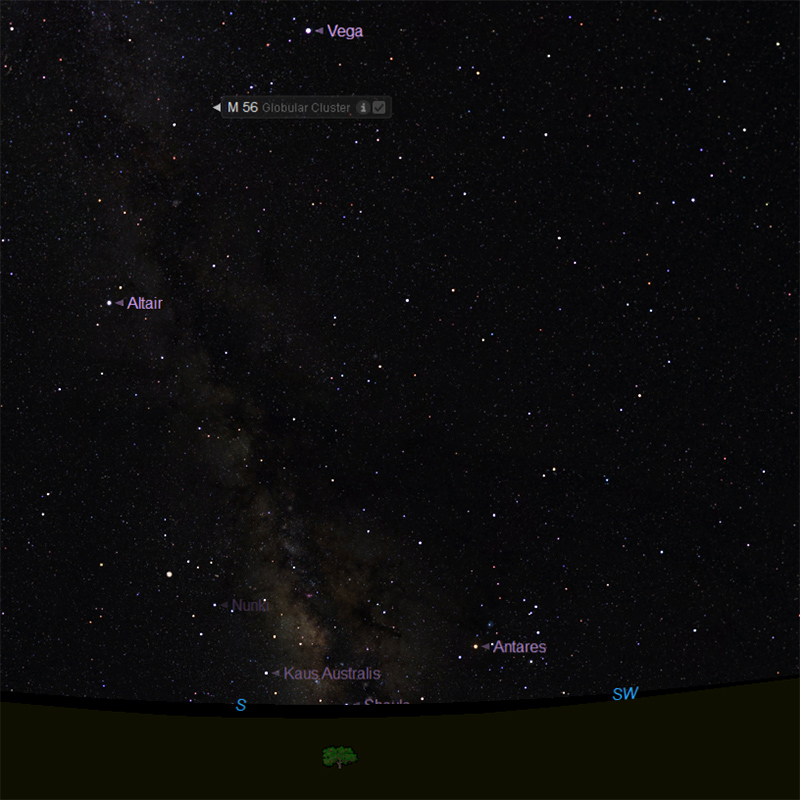M56

Credits: Keith Turnecliff, Long Itchington
M56 is a globular star cluster located in the small northern constellation Lyra.
M56 has an apparent magnitude of 8.3 and lies at a distance of 32,900 light years from Earth.
The cluster has the designation NGC 6779 in the New General Catalogue.
Messier 56 is relatively easy to find because it lies roughly halfway along the line from Albireo, Beta Cygni, to Sulafat, Gamma Lyrae.
Albireo, a famous double star, marks the beak of the celestial Swan and the base of the Northern Cross, while Sulaphat can be located in Lyra, on the opposite side to the bright Vega.
The cluster can be a challenge in binoculars because it is quite dim and does not have a bright core. In large binoculars, it appears as a fuzzy patch or an out-of-focus star. To resolve it into individual stars, one needs an 8-inch or larger telescope.
4-inch telescopes show a round ball of light, but do not reveal much detail. Visually, observers can only see the cluster’s central region, about 3 arc minutes in diameter. The best time of year to observe M56 is during the summer months.
M56 occupies an area of 8.8 arc minutes, which corresponds to a linear diameter of about 84 light years. It has a mass about 230,000 times that of the Sun. The estimated age of M56 is 13.7 billion years.
Facts about M56 by Keith Turnecliff
The cluster is located 34,000 light-years from Earth in the constellation Canes Venatici. It has an apparent magnitude of 6.2 and can be spotted using a pair of binoculars.

Best viewed with resolution 1920 x 1080.
Credits: Image courtesy of Starry Night Pro Plus 8, researched and implemented by Keith Turnecliff.